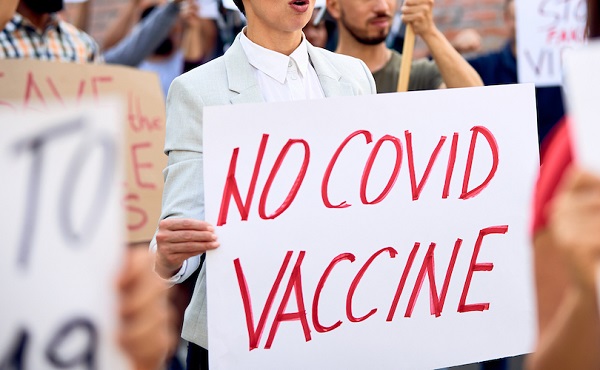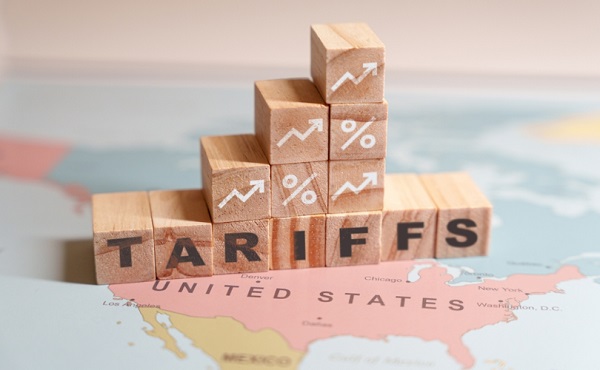Business
The world needs energy. Canada has the supply. Other nations eagerly fill the demand.
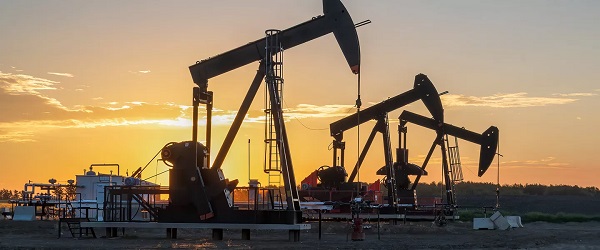
From the Fraser Institute
Spend time on the websites of Canada’s leading environmental non-governmental organizations (ENGOs) and you will see repeated references to the “energy transition”—the shift away from fossil-fuel energy sources to no- and low-carbon alternatives, to help lower the greenhouse gas (GHG) emissions that lie behind concerns over climate change.
While most countries—albeit not Donald Trump’s America—notionally support the 2015 Paris Agreement goal to limit global temperature increases to between 1.5 and 2.0 degrees centigrade, few are on track to slash their emissions sufficiently to reach that target. Indeed, emissions are still climbing, mainly due to the ravenous appetite for energy in many emerging economies.
Notwithstanding decades of climate change conferences, humanity remains firmly wedded to fossil fuels, which currently supply about four-fifths of global primary energy demand—a share that has fallen only slightly since the late-1990s. Moreover, as Canadian energy scholar Vaclav Smil recently noted, the absolute quantity of fossil fuels consumed by the world has risen by more than half since 1997.
Stupendous amounts of energy are needed to provide electrical power, for heating and cooling, transportation and agriculture, and to support many industrial processes. Today, fossil fuels are ubiquitous in all these areas. Only in the case of electricity have we observed a quantitatively significant move away from fossil fuel energy.
A glance at recent energy supply/demand projections highlights the dominant role of fossil fuels in the world’s energy system. The latest global outlook from multinational giant Shell is a good example.
According to Shell’s 2025 baseline forecast, worldwide demand for energy “will continue to increase as the global population grows and living standards rise.” By 2050, energy demand “could be nearly a quarter higher than in 2024 depending on economic growth rates, energy efficiency gains and the pace of electrification.”
Global oil demand is expected by grow by another 3-5 million barrels per day into the mid-2030s, confounding earlier forecasts of imminent “peak oil” consumption. Shell notes that “petroleum fuels remain affordable and convenient in transport, particularly in long-distance haulage, aviation and marine.” Oil also remains crucial to the petrochemicals sector.
Meanwhile, natural gas use is set to increase into the 2040s at least, with liquefied natural gas (LNG) representing a steadily rising share of the total natural gas market. Natural gas is a principal source of “industrial heat, fuel for power generation and heat for buildings.” It’s also critical to “helping the world move away from coal.”
Significant investments in oil and gas exploration, production, infrastructure and downstream processing “will be required for decades to come.” So much for the argument of Canadian environmental activists that it’s time to starve the oil and gas business of capital.
What are the implications of all of this for Canada?
We are endowed with an almost unmatched abundance of energy riches, notably the world’s third-largest oil reserves and vast amounts of natural gas. Canada is also a global leader in producing electricity from carbon-free sources. And energy plays an outsized role in our economy, directly accounting for one-tenth of GDP and supplying roughly a quarter of the country’s merchandise exports.
As a major energy producer, Canada has well-respected environmental standards and rigorous project approval and permitting processes. These are a long-term competitive advantage.
Even as efforts continue to reduce the carbon intensity of energy use and expand renewable power capacity, a growing world will need prodigious quantities of energy including oil and gas. Canada is well-placed to help meet it.
Business
This Sunday, June 8, is Tax Freedom Day, when Canadians finally start working for themselves

From the Fraser Institute
By Milagros Palacios, Jake Fuss and Nathaniel Li
This Sunday, June 8, Canadians will celebrate Tax Freedom Day, the day in the year when they start working for themselves and not government, finds a new study published by the Fraser Institute, an independent, non-partisan Canadian public policy think-tank.
“If Canadians paid all their taxes up front, they would work the first 158 days of this year before bringing any money home for themselves and their families,” said Jake Fuss, director of fiscal studies at the Fraser Institute.
Tax Freedom Day measures the total annual tax burden imposed on Canadian families by federal, provincial, and municipal governments.
In 2025, the average Canadian family (with two or more people) will pay $68,266 in total taxes. That’s 43.1 per cent of its annual income ($158,533) going to income taxes, payrolltaxes (including the Canada Pension Plan), health taxes, sales taxes (like the GST), property taxes, fuel taxes, “sin” taxes and more.
Represented as days on the calendar, the total tax burden comprises more than five months of income—from January 1 to June 7. On June 8th—Tax Freedom Day—Canadians finally start working for themselves, and not government.
But Canadians should also be worried about the nearly $90 billion in deficits the federal and provincial governments are forecasting this year, because they will have substantial tax implications in future years.
To better illustrate this point, the study also calculates a Balanced Budget Tax Freedom Day—the day of the year when the average Canadian finally would finally start working for themselves if governments paid for all of this year’s spending with taxes collected this year.
In 2025, the Balanced Budget Tax Freedom Day won’t arrive until June 21. “Tax Freedom Day helps put the total tax burden in perspective, and helps Canadians understand just how much of their money they pay in taxes every year,” Fuss said. “Canadians need to decide for themselves whether they are getting their money’s worth when it comes to how governments are spending their tax dollars.”
Tax Freedom Day for each province varies according to the extent of the provincially and locally levied tax burden.
2025 Provincial Tax Freedom Days
Manitoba May 17
Saskatchewan May 31
British Columbia May 31
Alberta May 31
Prince Edward Island June 2
New Brunswick June 4
Ontario June 7
Nova Scotia June 10
Newfoundland & Labrador June 19
Quebec June 21
CANADA June 8
Canadians Celebrate Tax Freedom Day on June 8, 2025
- In 2025, the average Canadian family will earn $158,533 in income and pay an estimated $68,266 in total taxes (43.1%).
- If the average Canadian family had to pay its taxes up front, it would have worked until June 7 to pay the total tax bill imposed on it by all three levels of government (federal, provincial, and local).
- This means that Tax Freedom Day, the day in the year when the average Canadian family has earned enough money to pay the taxes imposed on it, falls on June 8.
- Tax Freedom Day in 2025 comes one day earlier than in 2024, when it fell on June 9. This change is due to the expectation that the total tax revenues forecasted by Canadian governments will increase slower than the incomes of Canadians.
- Tax Freedom Day for each province varies according to the extent of the provincially levied tax burden. The earliest provincial Tax Freedom Day falls on May 17 in Manitoba, while the latest falls on June 21 in Quebec.
- Canadians are right to be thinking about the tax implications of the $89.4 billion in projected federal and provincial government deficits in 2025. For this reason, we calculated a Balanced Budget Tax Freedom Day, the day on which average Canadians would start working for themselves if governments were obliged to cover current expenditures with current taxation. In 2025, the Balanced Budget Tax Freedom Day arrives on June 21.
Business
Carney’s Energy Mirage: Why the Prospects of Economic Recovery Remain Bleak
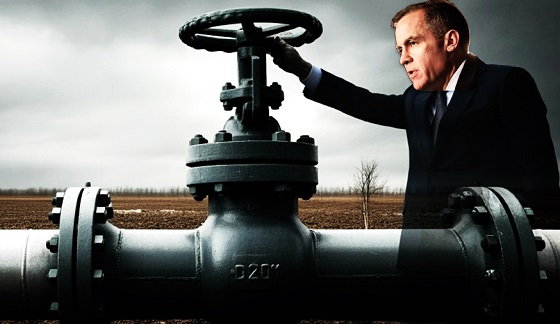
 By Gwyn Morgan
By Gwyn Morgan
Gwyn Morgan argues that Mark Carney, despite his polished image and rhetorical shift on energy, remains ideologically aligned with the Trudeau-era net-zero agenda that stifled Canada’s energy sector and economic growth. Morgan contends that without removing emissions caps and embracing real infrastructure investment, Canada’s recovery will remain a mirage — not a reality.
Pete Townshend’s famous lyrics, “Meet the new boss / Same as the old boss,” aptly describe Canada’s new prime minister. Touted as a fresh start after the Justin Trudeau years, Mark Carney has promised to turn Canada into a “clean and conventional energy superpower.” But despite the lovey-dovey atmosphere at Carney’s recent meeting with Canada’s premiers, Canadians should not be fooled. His sudden apparent openness to new energy pipelines masks a deeper continuity, in my opinion: Carney remains just as ideologically committed to net-zero emissions.
Carney’s carefully choreographed scrapping of the consumer carbon tax before April’s election helped reduce gasoline prices and burnished his centrist image. In fact, he simply moved Canada’s carbon taxes “upstream”, onto manufacturers and producers, where they can’t be seen by voters. Those taxes will, of course, be largely passed back onto consumers in the form of higher prices for virtually everything. Many consumers will blame “greedy” businesses rather than the real villain, even as more and more Canadian companies and projects are rendered uncompetitive, leading to further reductions in capital investment, closing of beleaguered factories and facilities, and lost jobs.
This sleight-of-hand is hardly surprising. Carney spent years abroad in a career combining finance and eco-zealotry, co-founding the Glasgow Financial Alliance for Net Zero (GFANZ) and serving as the UN’s Special Envoy for Climate Action and Finance. Both roles centred on pressuring institutions to stop investing in carbon-intensive industries – foremost among them oil and natural gas. Now, he speaks vaguely of boosting energy production while pledging to maintain Trudeau’s oil and natural gas emissions cap – a contradiction that renders new pipeline capacity moot.
Canada doesn’t need a rhetorical energy superpower. It needs real growth. Our economy has just endured a lost decade of sluggish overall growth sustained mainly by a surging population, declining per-capita GDP and a doubling of the national debt. A genuine recovery requires the kind of private-sector capital investment and energy infrastructure that Trudeau suppressed. That means lifting the emissions cap, clearing regulatory bottlenecks and building pipelines that connect our resources to global markets.
We can’t afford not to do this. The oil and natural gas industry’s “extraction” activities contribute $70 billion annually to Canada’s GDP; surrounding value-added activities add tens of billions more. The industry generates $35 billion in annual royalties and supports 900,000 direct and indirect jobs. Oil and natural gas also form the backbone of Canada’s export economy, representing nearly $140 billion per year, or about 20 percent of our balance of trade.
Yet Quebec still imports oil from Algeria, Saudi Arabia and Nigeria because Ottawa won’t push for a pipeline connecting western Canada’s producing fields to Quebec and the Maritimes. Reviving the cancelled Energy East pipeline would overcome this absurdity and give Canadian crude access to European consuming markets.
Carney has hinted at supporting such a project but refuses to address the elephant in the room: without scrapping the emissions cap, there won’t be enough production growth to justify new infrastructure. So pipeline CEOs shouldn’t start ordering steel pipe or lining up construction crews just yet.
I continue to believe that Carney remains beholden to the same global green orthodoxy that inspired Trudeau’s decade of economic sabotage. While the United States shifts course on climate policy, pulling out of the Paris Accord, abandoning EV mandates and even investigating GFANZ itself, Canada is led by a man at the centre of those systems. Carney’s internationalist career and personal life – complete with multiple citizenships and a spouse known for environmental activism – underscore how far removed he is from ordinary Canadians.
Carney’s version of “clean energy” also reveals his bias. Despite the fact that 82 percent of Canada’s electricity already comes from non-greenhouse-gas-emitting sources like hydro and nuclear, Carney seems fixated on wind and solar-generated power. These options are less reliable and more expensive – though more ideologically fashionable. To climate zealots, not all zero-emission energy is created equal.
Even now, after all the damage that’s been done, Canada has the potential to resume a path to prosperity. We are blessed with vast natural resources and skilled workers. But no economy can thrive under perpetual policy uncertainty, regulatory obstruction and ideological hostility to its core industries. Energy projects worth an estimated $500 billion were blocked during the Trudeau years. That capital won’t return unless there is clarity and confidence in the government’s direction.
Some optimists argue that Carney is ultimately a political opportunist who may shift pragmatically to boost the economy. But those of us who have seen this movie before are sceptical. During my time as a CEO in the oil and natural gas sector, I witnessed Justin’s father Pierre Trudeau try to dismantle our industry under the guise of progress. Carney, despite or perhaps because of his polish, may be the most dangerous of the three.
The original, full-length version of this article was recently published in C2C Journal.
Gwyn Morgan is a retired business leader who was a director of five global corporations.
-
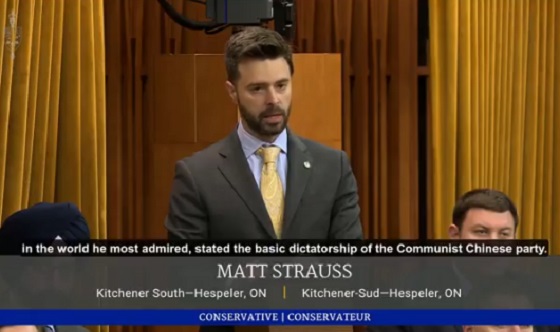
 National1 day ago
National1 day agoCensured doctor who’s now a Conservative MP calls COVID mandates ‘full Communism’
-

 Alberta1 day ago
Alberta1 day agoAlberta Sports Hall of Fame to Induct Class of 2025
-

 Alberta24 hours ago
Alberta24 hours agoPro-life activist describes how child traffickers take advantage of Alberta’s abortion lax laws
-

 Bruce Dowbiggin13 hours ago
Bruce Dowbiggin13 hours agoI’m A Victim, You’re A Victim, Wouldn’t You Like To Be A Victim, Too?
-
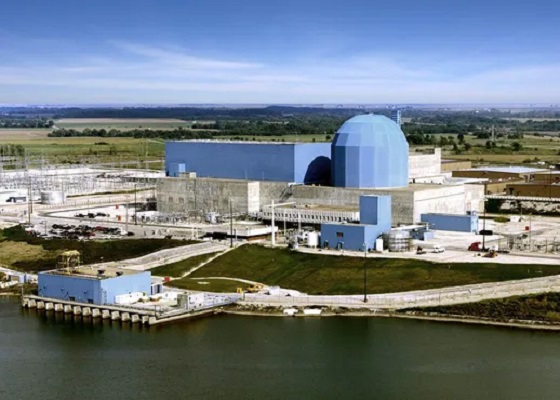
 Business2 days ago
Business2 days agoMeta inks 20 year deal for nuclear power
-

 Crime2 days ago
Crime2 days agoBoulder ‘terror’ suspect’s family in ICE custody, pending deportation
-

 Business1 day ago
Business1 day agoCarney’s Energy Mirage: Why the Prospects of Economic Recovery Remain Bleak
-
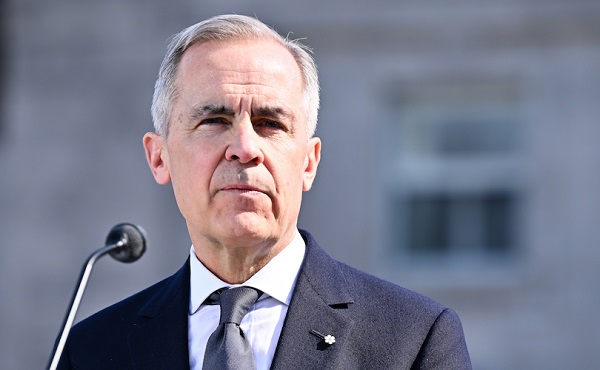
 Business2 days ago
Business2 days agoTo Build BIG THINGS Canada Needs to Rid Itself of BIG BARRIERS





